The Role of Sound Design in Cinematic Storytelling
While the visuals grab your attention, the unseen, powerful art of sound design immerses you in the film's world and stirs your emotions. We'll shed light on its undeniable impact on audience engagement, defining its status as one of the most important pillars of film storytelling.

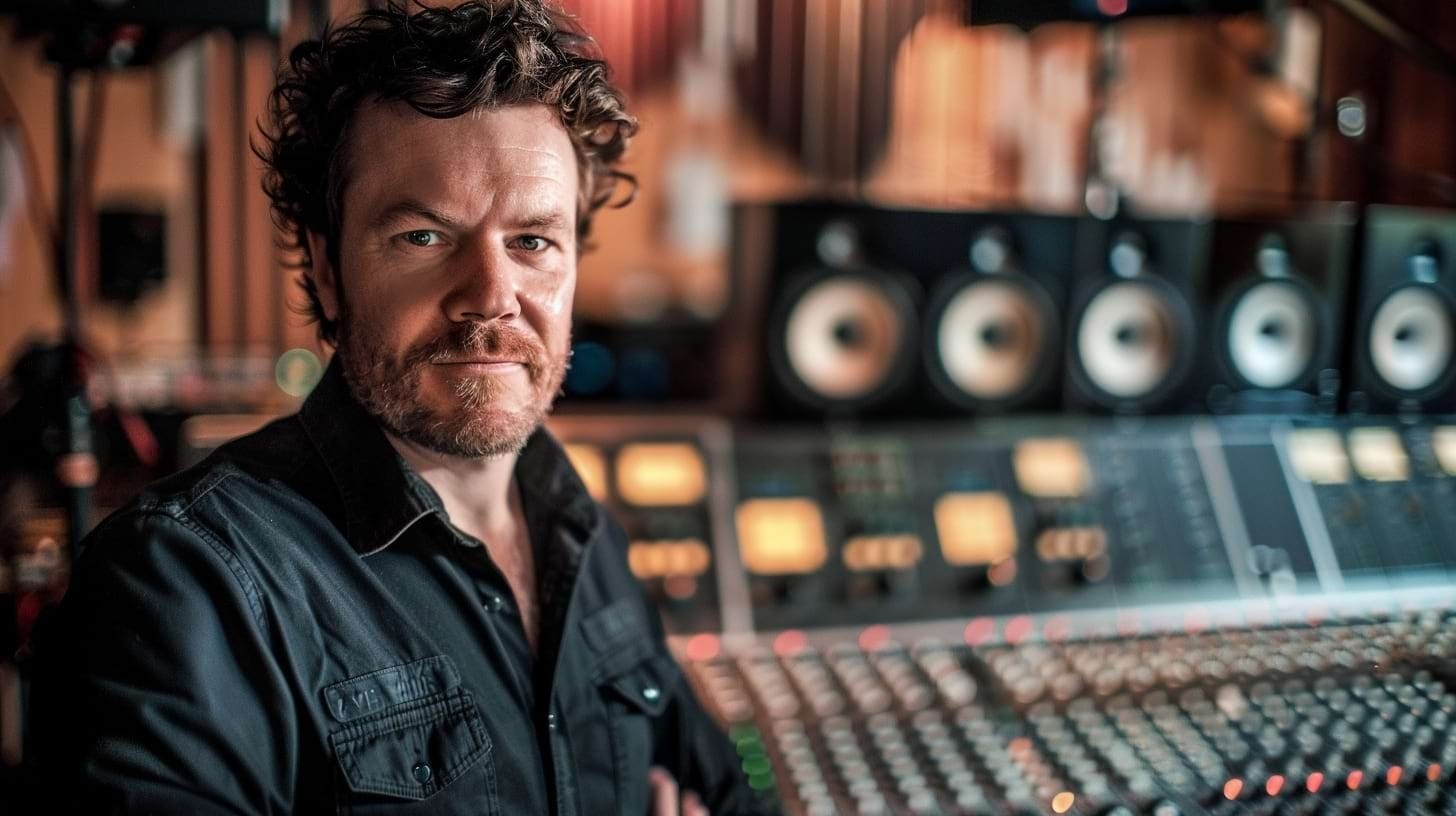
In the cinematic universe, where visual effects often take center stage, it's easy to overlook the profound influence of audio design. But behind every captivating scene lies a thoroughly crafted soundscape that plunges audiences into the narrative, heightens emotions, and brings stories to life.
🎬 🏆 The Academy Award for Best Sound Editing was introduced in 1963, highlighting the growing recognition of sound design's artistic merit.
In the following sections, we'll delve deeper into the fascinating realm of cinematic audio, exploring the various techniques and innovative trends that elevate films to new sonic heights.
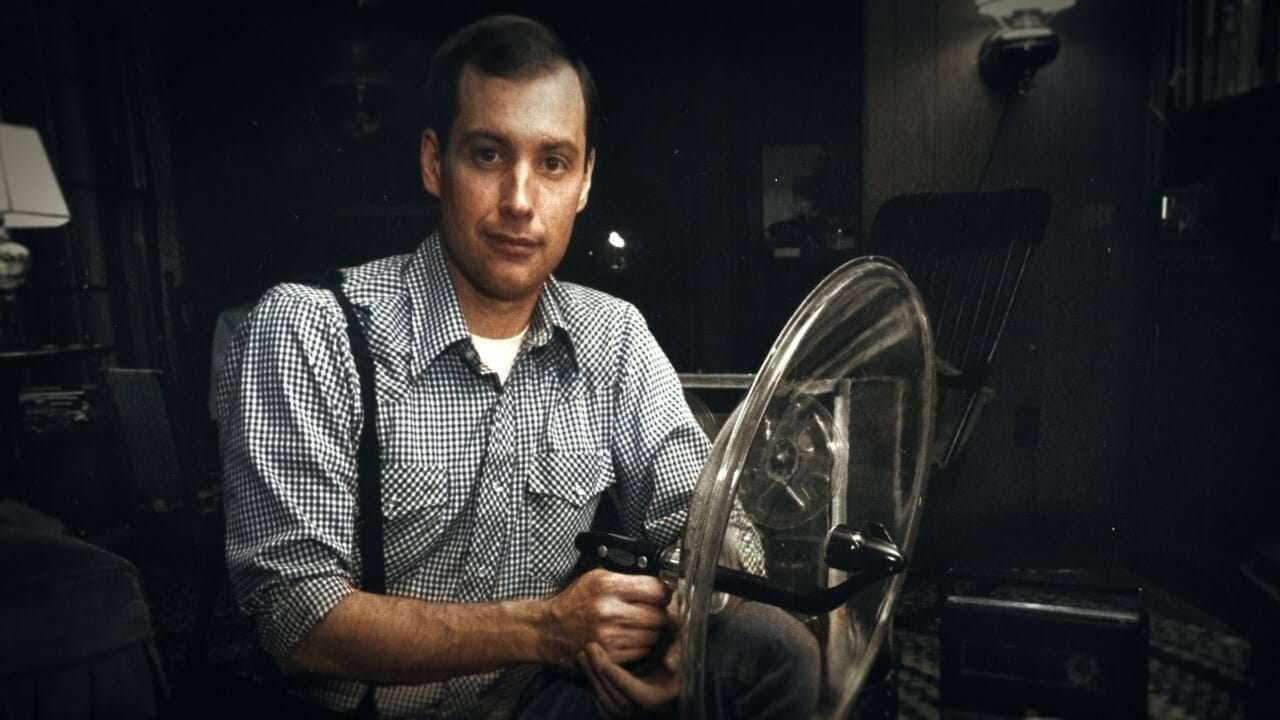
Essence of Sound Design 🔊
“Sound is half the picture,” said George Lucas, and for good reason - the “Star Wars” soundtrack has become a cult favorite for millions of viewers, and the sonic architecture of his legendary films has gone down in cinema history, revolutionizing the field.
From the subtle rustle of leaves to the thunderous roar of a waterfall, every sound serves a purpose, enriching the viewer's experience and fostering a deeper connection to the story.
Sound Design, often interchangeably referred to as Audio Design, encompasses the art of crafting and manipulating sound elements to create exciting auditory experiences.
At its core, audio design goes beyond simply reproducing reality; it involves strategically sound layering, manipulating frequencies, and orchestrating soundscapes to convey meaning and subtext.
✨The creak of an old floorboard whispers secrets and the chilling stillness of an empty room builds pressure. Remember the eerie whispers in "The Others"? It's through these intricate layers that sound design becomes a dialogue, deepening the story and captivating viewers viscerally.
Ewoks from "Star Wars: Return of the Jedi" (1983)
The Art of Making Silence Speak: Unmistafying Foley 🌟
Foley effects, also known as foley noise or simply Foley, are artificial sound effects utilized in the auditory architecture of films, television shows, sports broadcasts, and video games. These effects involve the careful selection, recreation, and layering of various ambient noises and synchronized sounds onto the audio track, enhancing the sense of realism.
The term "foley" and the role of a foley artist are attributed to Jack Foley, a pioneering figure in audio recording. Unlike traditional sound engineers who rely on pre-existing audio libraries, foley artists employ creative physical objects and specialized techniques to generate and mimic sounds in real-time.
✨ Imagine transforming a coconut shell into a galloping horse or a bowl of gelatin into a squelchy swamp. The iconic squish of the T-Rex footsteps in "Jurassic Park" was achieved with wet leather gloves.
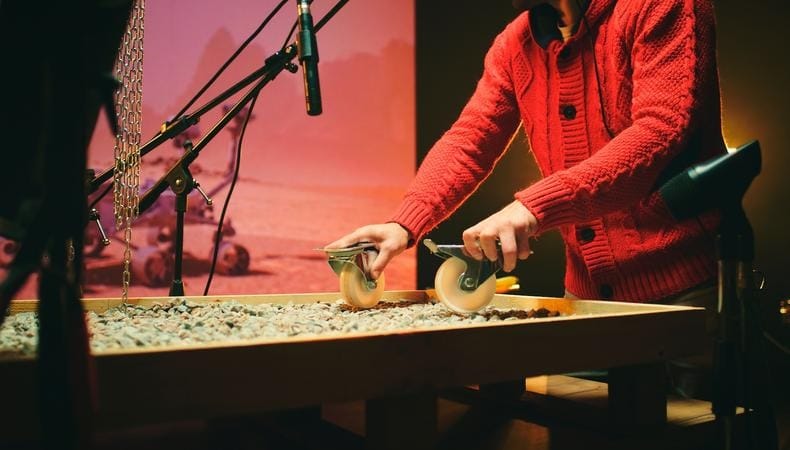
Foley studios serve as laboratories where artists carefully create and record audio effects. Equipped with an array of props, surfaces, and recording equipment, these studios provide the perfect environment for capturing the nuances of everyday sounds. But it can also be the creation of unusual sounds from an imaginary world, for example, the sound of a Jedi sword cutting the air.
Furthermore, foley effects serve the practical purpose of masking unwanted or extraneous noises captured during filming, such as background chatter, traffic, or urban ambiance.
💥 The Art of Foley in filmmaking is a testament to the power of creativity and innovation, enriching the cinematic experience.
Whispers of Place: The Power of Ambient Sounds in Film
Picture a busy city street without its sounds - no honks, no chatter, no distant sirens. It doesn't feel right, does it? That's because ambient sounds are the essence of a place that takes us straight into the story's core.
Ambient sound design goes beyond individual effects, crafting entire soundscapes that immerse viewers in the film's environment.
To reach that skilled sound designers use different techniques.
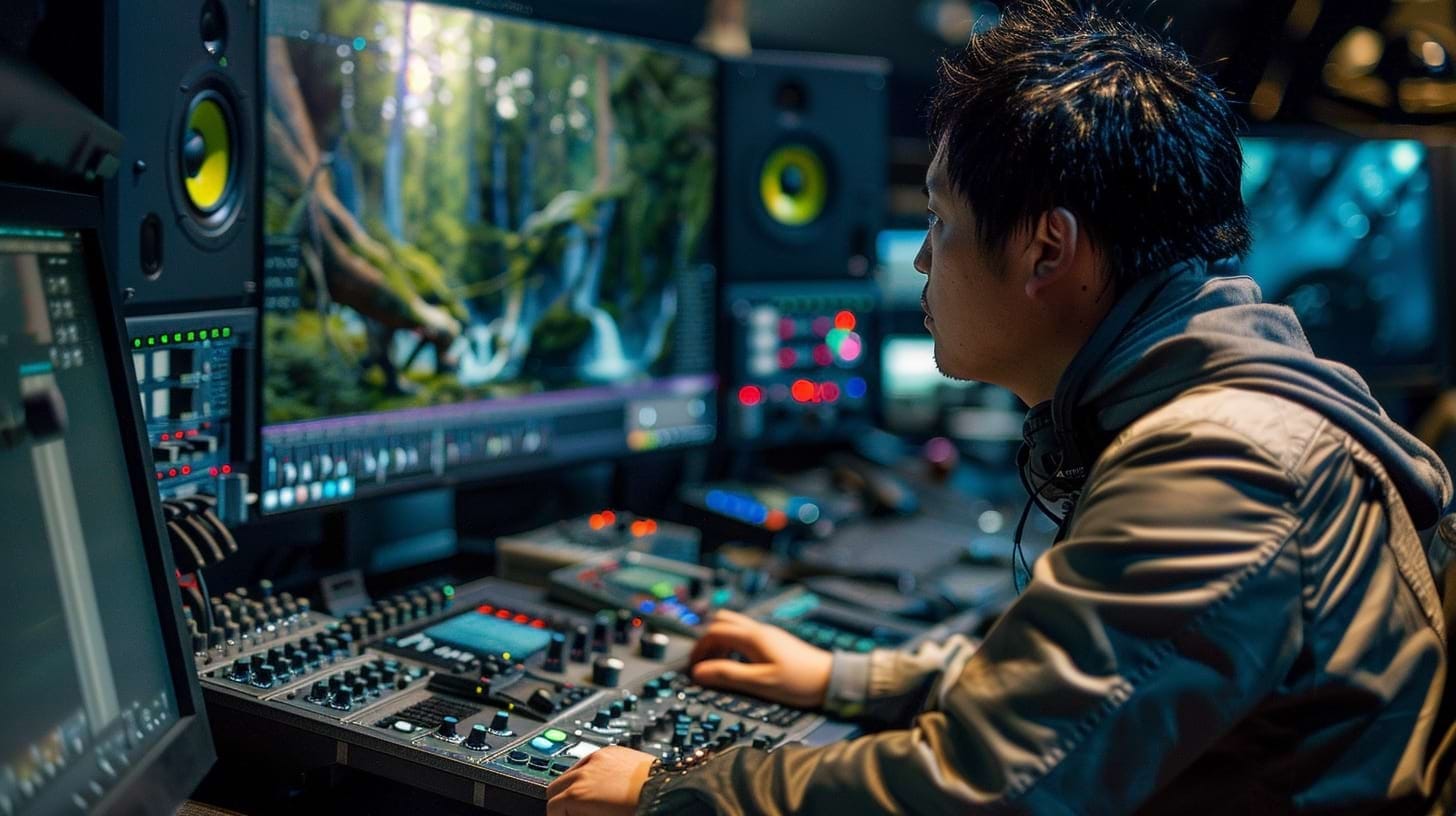
💡 Techniques in Ambient Sound Design
- Field Recording captures authentic sounds from various environments, enhancing ambient audio realism, using microphones.
- Sound Masking uses background noise to conceal unwanted sounds, improving auditory experiences.
- Layering and Mixing involve combining sounds to create rich soundscapes.
- Looping and Synchronization repeat audio segments for continuous backgrounds and ensure alignment with visuals
- Spatial Audio techniques, like Dolby Atmos, offer immersive experiences by placing sounds in three-dimensional spaces.
- Granular Synthesis transforms audio fragments into evolving textures.
- Generative Music and Procedural Sound Design use algorithms to produce dynamic soundscapes.
- Psychoacoustic Principles apply changes in pitch, panning, and volume to evoke emotions and create spatial depth."
🌟 By employing these techniques, sound designers can craft immersive ambient soundscapes that enhance the overall impact and engagement of their projects.
The Heartbeat of Cinema: The Value of the Film Score 🌟🎵
The Film Score, also known as the Background Score, is the musical composition that accompanies a film, enriching the visual narrative. Through instrumentation, melody, and rhythm, film scores enhance storytelling dynamics, guiding audiences through the peaks and valleys of the narrative arc.
Elevating the Emotional Impact of Soundtrack ✨🎼
Film scores uniquely elicit a wide range of emotions, from joy and exhilaration to fear and melancholy.
By synchronizing with on-screen actions and character dynamics, the film score intensifies emotional resonance, forging a deeper connection between audiences and the unfolding story.
The emotional impact of a film score extends far beyond the confines of the theater, resonating with audiences long after the credits roll.
🔊 Memorable themes and motifs become ingrained in the collective consciousness, evoking nostalgia and fostering a lasting connection to the cinematic experience.
Episode from Edgar Wright's "Baby Driver"
✨ A good example of synchronizing the soundtrack with the visual component, the dynamics of the plot, and the influence of music on the audience is the film "Baby Driver"
Edgar Wright filmed it to the rhythm of specific tracks, creating an iconic soundtrack and making the movie itself an unforgettable experience.
Edgar Wright uses a variety of sound design techniques, but the entire film is based on a unique approach: the main character Baby eludes the police in his car, setting each escape to a specific song. Wright carefully edits the chase scenes to fit these tracks, achieving perfect harmony between the scene and the music.
The Symphony Within the Scene: Diegetic & Non-Diegetic Sound ✨🎶
Imagine a bustling market scene: the cacophony of haggling voices, the clatter of carts. These sounds exist within the film's world, audible to its characters – they're diegetic.
But what about the soaring orchestral score that swells during a romantic encounter? That falls under non-diegetic sound, existing outside the film's world, heard only by the audience.
Understanding these distinctions is crucial for any filmmaker. Diegetic sound grounds the audience in the film's reality, fostering immersion and believability. Think of the creaking floorboards in "The Shining" that build suspense, or the dripping water in "Alien" that amplifies fear. It's the tangible soundscape the characters inhabit, adding texture and richness to the world.
Non-diegetic sound transcends the scene, shaping emotions and manipulating perception. The swelling score in "Star Wars" ignites heroism, while the melancholy piano in "Schindler's List" evokes sadness. It's the invisible emotional guide, leading the audience's journey.
Creative Use in Storytelling 💡
Diegetic sounds convey information about characters, settings, and plot developments.
Non-diegetic sounds, such as musical scores and voiceovers, enhance mood, evoke emotions, and provide insights into characters' inner thoughts and feelings.
But the true magic lies in balancing diegetic and non-diegetic sounds. Overusing non-diegetic sound can break immersion while neglecting diegetic elements can leave the world feeling sterile.
✨Mastering this balance is an art form. Filmmakers like Christopher Nolan weave diegetic and non-diegetic elements seamlessly.
What Nolan does especially well in "Dunkirk" 2017, is manipulating both types of sounds to create a sense of danger in the situation. It seems like every second the heroes find themselves in an increasingly hopeless situation.
Just watch, listen, and try to identify two different types of sounds. Also, try to understand how sound in that episode influences your emotions:
Episode from "Dunkirk" 2017, composer Hans Zimmer
To achieve this, composer Hans Zimmer uses two techniques. Firstly, the melody in the film is based on the ticking of a clock. Sound fixes the viewer's attention on time - and time in "Dunkirk" is the main enemy of the military, squeezed on the beach. Second, Zimmer created the illusion of an endlessly rising musical tone for the film, as if the danger grew along with the tone of the music, higher and higher, and there was no limit to this.
This example shows that the possibilities of sound design are endless and each choice shapes the audience's experience.
Sound is the soul of cinema — make every scene unforgettable!
Elevate your film’s audio design with cutting-edge AI tools.
Revolutionizing Cinematic Soundscapes: Innovations in Film Sound Mixing 🔊
Sound Mixing, also known as Audio Mixing, involves the art of blending and balancing various sound elements to create a cohesive auditory experience.
Innovations in film sound mixing have played a crucial role in enhancing the cinematic experience over the years. Here are some notable innovations in this field:
Ben Burtt's Audio Lab
🔊 3D Sound
Innovations like Dolby Atmos and DTS:X revolutionize audio by placing sounds in a 3D space, including overhead, for a truly immersive experience.
🎶 Ambisonics
This technique uses microphone arrays to capture sounds from all directions, creating a full-sphere audio experience that can be fine-tuned during mixing for enhanced spatial immersion.
🎵 Object-based Audio
This format treats sounds as independent "objects," each with its details like location and movement, offering filmmakers precise control over sound placement for a more lifelike audio scene.
🎼 Spatial Audio Technologies
Techniques like Wave Field Synthesis and binaural recording recreate soundscapes that mimic real-life sound wave behavior and human hearing, boosting immersion in films.
🎧 Interactive Sound Design
Emerging in VR and interactive media, this allows audio to adapt in real-time to user actions or environmental changes, creating a customized audio experience.
✨ These innovations, along with advancements in recording, editing, and mixing technologies, continue to push the boundaries of what's possible in film sound mixing.
How Sound Design Elevates the Cinematic Experience
The power of sound in film can't be overstated. From Foley art to creating legendary soundtracks and ambient soundscapes, sound designers wield a vast arsenal of techniques to bring a film's world to life. And as technology evolves, the possibilities continue to expand, with innovations like immersive 3D audio and AI-powered tools pushing the boundaries of cinematic sound.
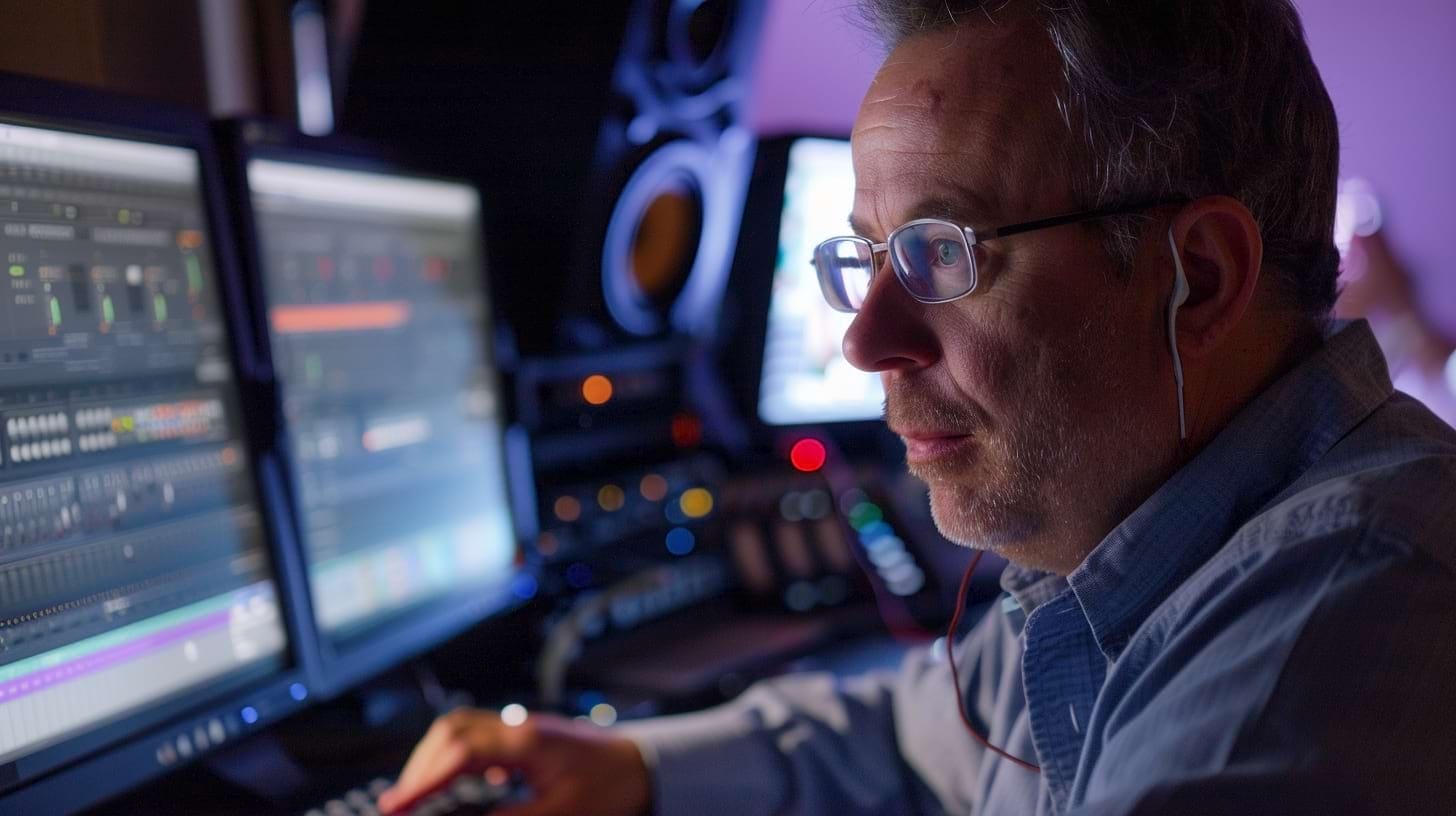
✨ While filmmakers focus on creative vision, AI built into Filmustage can automate script breakdowns and generate scene synopses. It can greatly help in pre-visualizing and planning sound design:
- Identify key moments, such as emotional beats, action sequences, and character interactions. This information can then be used to inform the sound design, ensuring that the audio cues support and enhance the story and character development.
- Recognize references to background sounds in a script, such as city noise, nature sounds, or music. This information can be used to create realistic and immersive cinematic audio that complements the visual elements of the film.
- Analyze the mood and tone of a script to select suitable music. This ensures that the music complements the visuals and enhances the emotional impact of the film. By the way, now there is a new trend using temporary music (temp music) during pre-production. With the advent of digital editing, it has become very easy to put any existing track under new footage.
- Collaborate with sound designers, making it easy to share ideas and feedback.
✨ With Filmustage, you can focus on the magic of storytelling, allowing sound to seamlessly complement your visuals and create an unforgettable cinematic experience for your audience.
From Breakdown to Budget in Clicks
Save time, cut costs, and let Filmustage’s AI handle the heavy lifting — all in a single day.